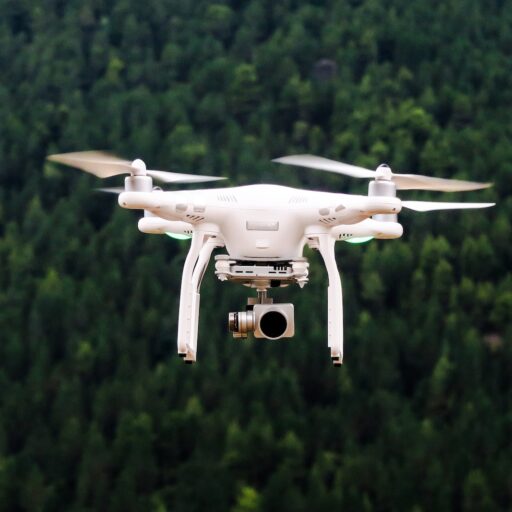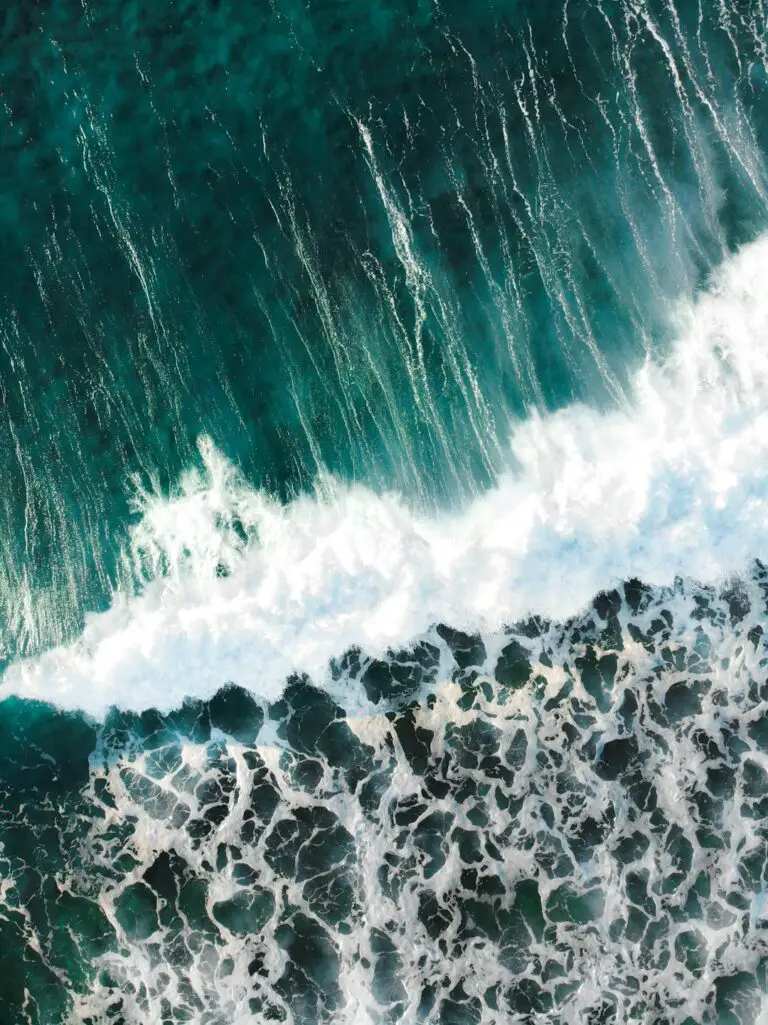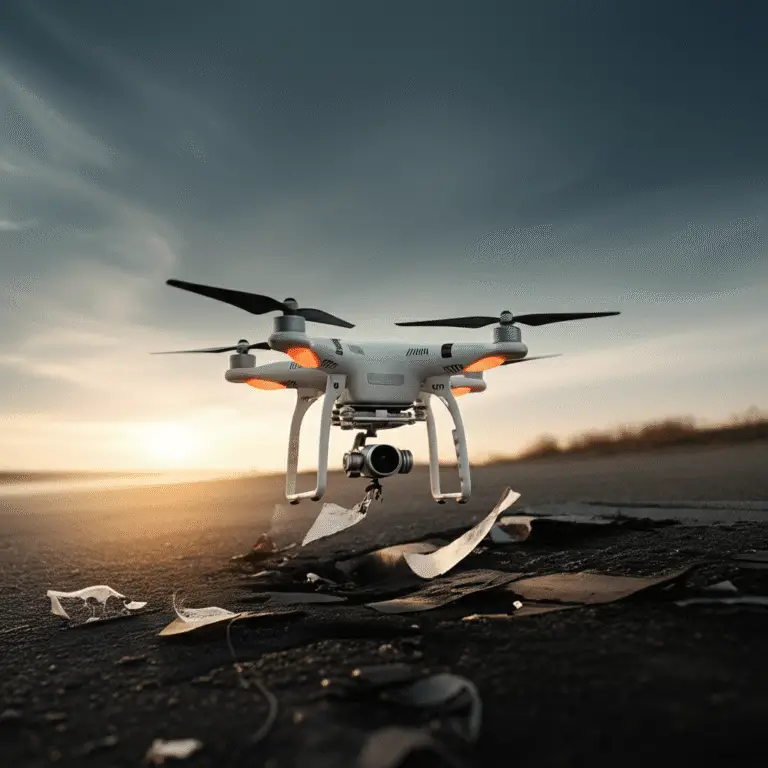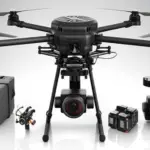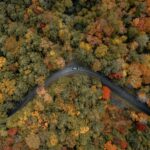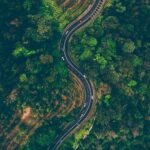Support our educational content for free when you purchase through links on our site. Learn more
7 Best Safe Drone Flying Spots You Must Know in 2025 🚁
Picture this: you’ve just unboxed your shiny new drone, heart racing with excitement, but the sky above your backyard is a no-fly zone. Frustrating, right? Finding safe drone flying spots isn’t just about open spaces—it’s a complex puzzle of airspace classes, local laws, weather, and etiquette. At Drone Brands™, we’ve logged hundreds of flights, and we’re here to guide you through the ultimate list of 7 safe and thrilling drone flying locations that will keep your flights legal, fun, and worry-free in 2025.
But wait—did you know that flying near an airport without permission can cost you thousands in fines? Or that some of the best flying spots are hidden gems like dedicated RC airfields and rural fields you might never have considered? Stick around as we reveal these insider secrets, plus the top tools and tips to plan your next flight like a pro.
Key Takeaways
- Know your airspace: Understanding controlled vs. uncontrolled airspace is crucial for safe drone flying.
- Top 7 safe flying spots: From drone parks to rural open fields, we cover the best locations for every pilot level.
- Avoid no-fly zones: Airports, military bases, national parks, and crowded events are off-limits—always check before you fly.
- Use tech tools: Apps like B4UFLY, AirMap, and the NRC Drone Site Selection Tool help you find legal and safe spots instantly.
- Respect privacy and laws: Always get permission on private property and follow local ordinances to be a responsible pilot.
Ready to find your perfect flying spot? Check out our recommended drones and gear to get started:
- DJI Mavic Air 2: Amazon | DJI Official Website
- B4UFLY App: Apple Store | Google Play
Let’s get your drone in the air—safely and spectacularly!
Table of Contents
- ⚡️ Quick Tips and Facts
- ✈️ The Evolution of Airspace: A Brief History of Drone Regulations & Safe Flying
- 🗺️ Decoding the Sky: Understanding Airspace & No-Fly Zones (NFZs)
- ✅ Top 7 Types of Safe Drone Flying Locations: Our Expert Picks!
- 🪁 Dedicated RC Airfields & Drone Parks: The Ultimate Playground
- 🌳 Public Parks & Open Spaces: Green Light, Green Skies (with a Catch!)
- 🔑 Private Property: Permission is Key!
- 🗺️ Designated Recreational Flying Areas: Hidden Gems for Hobbyists
- 🤠 Uncontrolled Airspace (Class G): The Wild West (with Rules!)
- 🏟️ Local Community Fields & Sports Complexes: Check Before You Fly!
- 🌾 Open Fields & Rural Areas: Wide Open Spaces for Exploration
- ❌ 5 Critical Places to Avoid Flying Your Drone: Know Before You Go!
- ✈️ Near Airports & Controlled Airspace (Classes B, C, D, E): Don’t Be That Pilot!
- 🏭 Over Critical Infrastructure: Power Plants, Prisons, & More
- 🏞️ National Parks & Wilderness Areas: Protect Our Wild Spaces
- 🧑🤝🧑 Crowded Events & Populated Areas: Safety, Privacy, & Common Sense
- 🛑 Military Bases & Restricted Airspace: Seriously, Just Don’t.
- 📱 Finding Your Perfect Launchpad: Essential Tools & Resources for Drone Pilots
- 🌬️ Beyond Location: Key Factors for a Truly Safe Drone Flight
- 💼 Flying for Profit: Navigating Commercial Drone Operations & Part 107
- 🛡️ Protecting Your Investment: Why Drone Insurance Matters
- 🌟 Responsible Drone Piloting: Elevating the Hobby for Everyone
- 🚀 Conclusion: Fly Smart, Fly Safe, Fly On!
- 🔗 Recommended Links: Your Go-To Resources
- 🤔 FAQ: Your Most Pressing Drone Flying Questions Answered
- 📚 Reference Links: Our Sources & Further Reading
⚡️ Quick Tips and Facts
Welcome to the sky-high world of drone flying! At Drone Brands™, where we specialize in Aerial Adventures with Drones, we know that finding safe drone flying spots is the golden ticket to a stress-free flight. Before you take off, here are some quick nuggets to get you soaring smartly:
- ✅ Always check local and federal regulations first! The FAA in the U.S. and Transport Canada in Canada have strict rules about where you can fly.
- ✅ Use apps like B4UFLY, AirMap, or the NRC Drone Site Selection Tool to identify legal and safe flying zones near you.
- ✅ Avoid flying near airports, heliports, or military bases. These are no-fly zones for a reason.
- ✅ Weather matters! Wind, rain, and temperature can make or break your flight.
- ✅ Respect privacy and avoid crowded areas. Nobody wants their BBQ crashed by a buzzing drone.
- ✅ Get permission if flying on private property. It’s just good manners and the law in many places.
Curious about how these tips translate into real-world flying spots? Keep reading — we’re about to dive deep into the where, why, and how of safe drone flying locations. 🚁
For a detailed guide on where you can fly legally, check out our related article: Where Can I Fly My Drone?
✈️ The Evolution of Airspace: A Brief History of Drone Regulations & Safe Flying
Before drones were zipping around our skies, airspace was the domain of manned aircraft, governed by decades-old aviation laws. But as drones entered the scene, regulators had to rethink the rules. Here’s a quick flight path through the history of drone regulations:
- Early 2000s: Drones were mostly military toys. Civilian use was minimal and largely unregulated.
- 2012-2015: The FAA began formalizing rules for hobbyist drones, introducing guidelines to keep drones away from airports and crowds.
- 2016: The FAA launched the Part 107 rule for commercial drone pilots, requiring certification and operational limits.
- 2019-2024: Increasing integration of drones into controlled airspace, with tools like LAANC (Low Altitude Authorization and Notification Capability) enabling near real-time flight authorizations.
- Canada’s Approach: Transport Canada introduced the Drone Pilot Certificate and the NRC Drone Site Selection Tool to help pilots navigate complex airspace safely.
This evolution reflects a balancing act: encouraging innovation and fun, while protecting public safety and privacy. It’s why knowing the history helps you appreciate why certain spots are safe — and others are off-limits.
🗺️ Decoding the Sky: Understanding Airspace & No-Fly Zones (NFZs)
If the sky were a giant chessboard, airspace classes and no-fly zones would be the rules of the game. Let’s break it down:
| Airspace Class | Description | Drone Access | Key Restrictions |
|---|---|---|---|
| Class A | High altitude, commercial flights only | ❌ No drone flights | Above 18,000 ft MSL |
| Class B | Around major airports | ❌ Restricted | Requires ATC permission, LAANC helps |
| Class C | Medium-sized airports | ❌ Restricted | Permission required |
| Class D | Smaller airports | ❌ Restricted | Permission required |
| Class E | Controlled airspace not covered above | ✅ Allowed with restrictions | Usually needs authorization |
| Class G | Uncontrolled airspace | ✅ Best for hobbyists | Follow basic safety rules |
No-Fly Zones (NFZs) include:
- Airports and heliports
- Military bases and restricted government facilities
- National parks (in many countries)
- Emergency response areas (fires, accidents)
- Large public events
Pro Tip: Use apps like B4UFLY or AirMap to visualize these zones in real-time.
✅ Top 7 Types of Safe Drone Flying Locations: Our Expert Picks!
Ready to find your next drone adventure spot? Our team at Drone Brands™ has flown in hundreds of locations and distilled the best types of safe flying zones. Here’s our top 7 — each with a little insider scoop!
1. 🪁 Dedicated RC Airfields & Drone Parks: The Ultimate Playground
Why we love them: These are purpose-built for drone and RC aircraft flying. They often have clear boundaries, safety protocols, and fellow enthusiasts to share tips with.
Features:
- Designated takeoff/landing zones
- Usually away from restricted airspace
- Often have club rules and insurance requirements
- Great for beginners and pros alike
Drawbacks: May require membership or fees; limited availability in some areas.
Example: The Academy of Model Aeronautics (AMA) has a nationwide directory of RC fields — check out their map here.
2. 🌳 Public Parks & Open Spaces: Green Light, Green Skies (with a Catch!)
Public parks can be fantastic for flying — wide open, scenic, and accessible. But beware:
- Many parks have local ordinances restricting drone use. Always check with park authorities.
- Avoid crowds and sensitive wildlife areas.
- Respect privacy — no flying over picnic areas or playgrounds.
Our tip: Early mornings or weekdays are best to avoid people and maximize your flight space.
3. 🔑 Private Property: Permission is Key!
Flying on private land is a dream for many — no crowds, no NFZs nearby, and you can customize your flight plan. But:
- Always get explicit permission from the landowner.
- Check local laws about drone flights over private property — some places consider it trespassing or invasion of privacy.
- Use this option for practice or commercial shoots when possible.
4. 🗺️ Designated Recreational Flying Areas: Hidden Gems for Hobbyists
Some municipalities and drone clubs designate specific zones for recreational drone use. These spots balance safety, legality, and fun.
- Often listed on local government or drone club websites.
- May have specific hours or seasonal restrictions.
- Great for meeting other pilots and learning.
5. 🤠 Uncontrolled Airspace (Class G): The Wild West (with Rules!)
Class G airspace is your best friend for casual flying — it’s uncontrolled, meaning fewer restrictions. But:
- Stay below 400 feet (122 meters).
- Keep your drone within visual line of sight (VLOS).
- Avoid flying near airports or heliports even if in Class G.
- Follow FAA or Transport Canada safety rules.
6. 🏟️ Local Community Fields & Sports Complexes: Check Before You Fly!
Many community sports fields are open and flat — perfect for drone takeoff and landing. However:
- Some fields prohibit drones due to insurance or liability concerns.
- Always ask permission from local authorities or field managers.
- Avoid flying during games or events.
7. 🌾 Open Fields & Rural Areas: Wide Open Spaces for Exploration
If you crave solitude and endless horizons, rural open fields are ideal. Benefits include:
- Minimal air traffic and NFZs.
- Less chance of disturbing people or wildlife.
- Great for practicing maneuvers and long-range flights.
Watch out: Check for private property boundaries and agricultural activity.
❌ 5 Critical Places to Avoid Flying Your Drone: Know Before You Go!
Not all skies are friendly skies! Here are the top 5 no-go zones that every drone pilot must avoid:
1. ✈️ Near Airports & Controlled Airspace (Classes B, C, D, E): Don’t Be That Pilot!
- Flying near airports without authorization is a serious federal offense.
- Controlled airspace requires prior permission, often via LAANC in the U.S. or advanced certification in Canada.
- Violations can lead to fines, drone confiscation, or worse.
2. 🏭 Over Critical Infrastructure: Power Plants, Prisons, & More
- These sites are often protected for security reasons.
- Flying over them can trigger law enforcement response.
- Avoid at all costs to keep your drone and your record clean.
3. 🏞️ National Parks & Wilderness Areas: Protect Our Wild Spaces
- In the U.S., the National Park Service prohibits drone flights in all national parks.
- Canada’s Parks Canada requires special permits.
- Drones disturb wildlife and other visitors — be a responsible pilot.
4. 🧑🤝🧑 Crowded Events & Populated Areas: Safety, Privacy, & Common Sense
- Flying over crowds is dangerous and often illegal.
- Privacy concerns are paramount — avoid filming people without consent.
- Use your drone for fun, not to invade personal space.
5. 🛑 Military Bases & Restricted Airspace: Seriously, Just Don’t.
- These are strict no-fly zones with severe penalties for violations.
- Military airspace is monitored closely.
- Respect the rules and keep your drone grounded here.
📱 Finding Your Perfect Launchpad: Essential Tools & Resources for Drone Pilots
Finding safe drone flying spots is easier than ever thanks to some fantastic digital tools. Here’s our expert rundown:
📲 B4UFLY & AirMap: Your Digital Co-Pilots
- B4UFLY (by the FAA) offers a simple interface to check if a location is safe and legal to fly in the U.S.
- AirMap provides real-time airspace information, flight planning, and even NOTAMs (Notice to Airmen).
- Both apps help you avoid no-fly zones and get authorizations where needed.
✅ LAANC: Instant Authorization for Controlled Airspace Access
- The Low Altitude Authorization and Notification Capability (LAANC) system allows drone pilots to request near-instant permission to fly in controlled airspace around airports.
- Available through multiple apps, it’s a game-changer for commercial and hobbyist pilots alike.
🤝 Local Drone Clubs & Online Communities: Connect & Learn!
- Joining a drone club can unlock access to private flying fields, expert advice, and social flying events.
- Online forums like DJI Forums, Reddit r/drones, and Meetup groups are treasure troves of local knowledge.
- The AMA (Academy of Model Aeronautics) is a great place to start in the U.S.
📊 Understanding Sectional Charts: Reading the Sky Like a Pro
- Sectional charts are aeronautical maps showing airspace classes, obstacles, airports, and more.
- Learning to read them helps you plan flights that avoid restricted zones.
- Tools like SkyVector (skyvector.com) provide free online access.
🌬️ Beyond Location: Key Factors for a Truly Safe Drone Flight
Safe flying isn’t just about where you launch — it’s about how you prepare and respect the environment.
☀️ Weather Wisdom: Wind, Rain, & Temperature Considerations
- Wind: Most consumer drones handle winds up to 15-20 mph, but gusts can cause instability.
- Rain: Avoid flying in rain or snow unless your drone is waterproof (rare). Moisture damages electronics.
- Temperature: Batteries perform poorly in extreme cold or heat; plan accordingly.
Use weather apps like Windy for detailed forecasts.
📜 Local Ordinances & Bylaws: The Rules You Didn’t Know You Needed to Know
- Beyond federal laws, many cities and counties have their own drone restrictions.
- Examples include bans in city parks, limits on flight times, or noise ordinances.
- Always check municipal websites or contact local authorities.
👀 Privacy & Ethical Flying: Be a Good Drone Neighbor!
- Respect people’s privacy — avoid flying over private homes or capturing images without consent.
- Avoid recording audio or video in sensitive areas.
- Follow the Drone Brands™ Code of Conduct: Fly responsibly, respect others, and share the skies.
🛠️ Pre-Flight Checks & Equipment Readiness: Your Drone’s Health Check-Up
Before every flight:
- Inspect propellers for damage or wear.
- Check battery charge and health.
- Calibrate compass and GPS.
- Test controller and drone communication.
- Review flight plan and emergency procedures.
Our team swears by a pre-flight checklist app like DroneDeploy or Kittyhawk to avoid surprises.
💼 Flying for Profit: Navigating Commercial Drone Operations & Part 107
If you want to turn your drone hobby into a business, understanding commercial regulations is key.
- In the U.S., the FAA Part 107 certification is mandatory for commercial drone pilots.
- Part 107 requires passing a knowledge test, registering your drone, and following operational limits.
- Commercial flights often require additional permissions for controlled airspace and special use areas.
- Canada requires a Drone Pilot Certificate and adherence to Transport Canada’s rules.
Pro Tip: Join our Drone Business Opportunities category for detailed guides on certification, insurance, and client management.
🛡️ Protecting Your Investment: Why Drone Insurance Matters
Drones are expensive gadgets, and accidents happen. Insurance can save you thousands:
- Liability insurance covers damage or injury to others.
- Hull insurance covers damage to your drone.
- Some commercial clients require proof of insurance before hiring you.
- Providers like Verifly, SkyWatch.AI, and DroneInsurance.com offer tailored policies.
Our pilots recommend insurance especially if you fly in public spaces or commercially.
🌟 Responsible Drone Piloting: Elevating the Hobby for Everyone
At Drone Brands™, we believe every pilot has a role in shaping the future of drone flying:
- Always follow laws and guidelines.
- Educate new pilots and share knowledge.
- Report unsafe drone activity to authorities.
- Support local drone clubs and community initiatives.
- Respect wildlife and natural habitats.
By flying responsibly, you help keep the skies open and safe for all drone enthusiasts.
🚀 Conclusion: Fly Smart, Fly Safe, Fly On!
So, what’s the secret sauce to finding the perfect safe drone flying spot? It’s a blend of knowing the rules, respecting the environment, and using the right tools — all seasoned with a dash of common sense and courtesy. From dedicated RC airfields to open rural fields, the sky is full of opportunities for every pilot, whether you’re a newbie or a seasoned pro.
Remember our quick tips: always check airspace classifications, avoid no-fly zones like airports and military bases, respect privacy, and prepare for weather and equipment challenges. Tools like B4UFLY, AirMap, and Canada’s NRC Drone Site Selection Tool are your best friends for planning safe flights.
If you’re dreaming of commercial flights, don’t skip the Part 107 certification or the equivalent in your country — it’s your ticket to flying legally and confidently.
Above all, be a responsible pilot. Your actions shape the future of drone flying for everyone. So, strap in, power up, and let your drone adventures take flight — safely and smartly!
🔗 Recommended Links: Your Go-To Resources
Ready to gear up or dive deeper? Here are some top picks and resources from Drone Brands™:
-
DJI Mavic Air 2 (our go-to all-rounder drone):
Amazon | DJI Official Website -
B4UFLY App (FAA’s official airspace checker):
Apple App Store | Google Play Store -
AirMap App (real-time airspace and flight planning):
AirMap Official -
Verifly Drone Insurance (on-demand liability insurance):
Verifly Official -
Academy of Model Aeronautics (AMA) Field Locator (find local RC airfields):
AMA Field Map -
Books for Drone Pilots:
-
NRC Drone Site Selection Tool (Canada’s interactive map for safe flying):
NRC Drone Site Selection Tool
🤔 FAQ: Your Most Pressing Drone Flying Questions Answered
What are the best drone flying spots near me?
The best spots depend on your location, but generally, dedicated RC airfields, public parks with drone permissions, and rural open fields are top choices. Use apps like B4UFLY (U.S.) or the NRC Drone Site Selection Tool (Canada) to find legal and safe zones near you. Also, joining local drone clubs can reveal hidden gems and community-approved flying areas.
Are there any national parks that allow drone flying?
In the U.S., National Parks prohibit drone flights to protect wildlife and visitor experience. Canada’s Parks Canada also generally bans drones but may grant special permits for research or filming. Always check with park authorities before considering drone use in protected areas.
How can I find safe and legal places to fly my drone?
Start with official tools like the FAA’s B4UFLY app, AirMap, or Canada’s NRC Drone Site Selection Tool. These apps provide real-time airspace info, no-fly zones, and authorization requirements. Additionally, consult local laws, municipal ordinances, and drone clubs for community-specific guidance.
What are the rules for flying a drone over private property?
Flying over private property without permission can violate privacy and trespassing laws. Always seek explicit permission from landowners. Respect privacy by avoiding filming people without consent. Some jurisdictions have strict drone privacy laws, so check your local regulations.
Can I fly my drone in areas with high foot traffic or crowds?
No. Flying over crowds or densely populated areas is generally illegal and unsafe. It risks injury and privacy violations. Stick to open spaces and maintain a safe distance from people. Use your drone responsibly to avoid accidents and legal trouble.
Are there any specific drone flying spots for beginners to practice?
Yes! Dedicated RC airfields and drone parks are ideal for beginners. They provide controlled environments with fewer hazards and often have experienced pilots to guide you. Public parks with drone-friendly policies and open rural fields are also good options, provided you follow local rules.
How can I check for no-fly zones and restrictions before flying my drone?
Use official apps like B4UFLY, AirMap, or the NRC Drone Site Selection Tool to view no-fly zones, controlled airspace, and temporary flight restrictions (NOTAMs). Always check for local ordinances and emergency restrictions. Planning ahead keeps you legal and safe.
What should I consider about weather before flying my drone?
Wind, rain, temperature, and visibility all affect drone performance. Avoid flying in strong winds (usually above 15-20 mph), rain, or snow. Cold weather can reduce battery life. Use weather apps like Windy to plan your flight for optimal conditions.
📚 Reference Links: Our Sources & Further Reading
- FAA B4UFLY App: https://www.faa.gov/uas/getting_started/b4ufly
- AirMap Official Website: https://uavcoach.com/airmap-closes-app/
- Academy of Model Aeronautics (AMA): https://www.modelaircraft.org/
- Transport Canada Drone Safety: https://tc.canada.ca/en/aviation/drone-safety
- NRC Drone Site Selection Tool: https://nrc.canada.ca/en/uav-site-selection
- FAA Part 107 Certification Info: https://www.faa.gov/uas/commercial_operators/become_a_drone_pilot
- Verifly Drone Insurance: https://www.verifly.com/
- SkyVector Aeronautical Charts: https://skyvector.com/
- Windy Weather Forecast: https://www.windy.com/
Fly safe, fly smart, and keep those propellers spinning! 🚁✨
